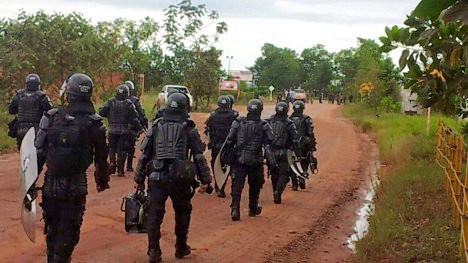U.S.-backed Anti-Narcotics Police Attack Indigenous Community
- Evan King
- Dec 2, 2020
- 2 min read

On Monday November 30th, helicopters buzzed atop the Nasa Indigenous community of El Descanso, in the Southern department of Putumayo. The helicopters carried members of Colombia’s Anti-narcotics Police and Mobil Anti-Riot Squad (ESMAD), with the purpose of carrying out forced eradication operations on Indigenous territory.
The Inter-Church Commission for Justice and Peace, denounced the arrival of 3 military style helicopters carrying over 50 agents equipped with manual spraying tanks filled with glyphosate. The Indigenous Guard, a territorial authority figure, attempted to formulate a dialogue with the state security forces, however, they were met with tear gas and repressive tactics that resulted in injuries to arms and legs of at least two residents.

According to the Inter-Church Commission of Justice and Peace, the objective of the Anti-Narcotics police was to carry out glyphosate fumigations to eradicate 1.5 hectares of coca belonging to two families members of the Nasa community.
Later that day, the helicopters returned to the community and picked up the more than 50 units that engaged in the operation. These actions continue to undermine the rights and territorial autonomy of indigenous peoples, as well as their constitutional right to prior and informed consent of any intervention in their territory.
The exponential increase in forced eradication operations in various communities in the departments of Putumayo, Cauca, Narino, among others; exacerbates the social and environmental crisis that these territories face, at the same time that trust in public institutions is at an all time low, due to the lack of implementation of the 2016 peace accords. These operations, backed by the United States, not only pose a serious risk to fragile ecosystems, but also tramples over basic human rights and the dignity of Indigenous, Afro-descendant and Campesino communities.

留言